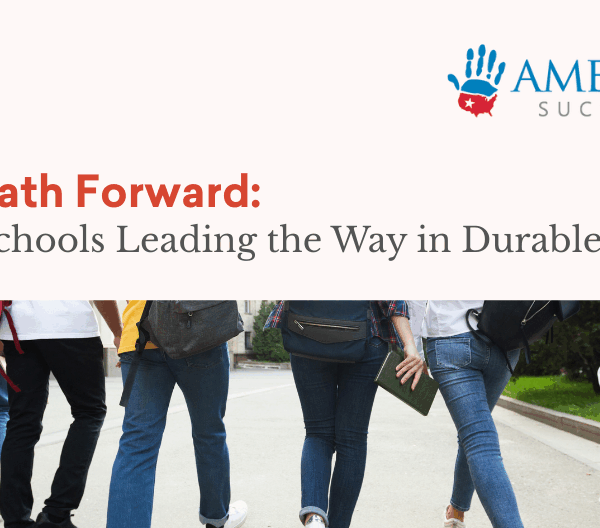By Eric Lerum
Editor’s note: This post is a submission to Fordham’s 2018 Wonkathon. We asked assorted education policy experts whether our graduation requirements need to change, in light of diploma scandals in D.C., Maryland, and elsewhere. Find the original submission on their website here; other entries can be found here.
Whenever a classmate would question the question, my favorite law school professor would say, “Don’t fight the hypothetical.” It’s a good premise for intellectual exercises—like a Wonkathon—and so I’ll begin by answering the question directly before getting to the deeper issue at hand.
Standards for graduating high school
There should be just two overarching standards for high school graduation.
First, every student must demonstrate academic competency. No diploma (*spoiler alert—or certificate or credit) will carry a graduate far without high competency in core academics because every student must be a lifelong learner. Others can debate how to demonstrate that competency and in which specific subjects, but those debates should not overshadow or water down the critical premise: If a student is not prepared to continue learning, then she is not prepared to graduate.
Second, every student must demonstrate that they can apply the skills they’ve learned in a post–high school setting. Employers are constantly telling us that how you can apply skills is as important as what you actually know. When hiring, they’re looking at habits and behaviors. Students must be able to think critically, collaborate with colleagues, solve problems, and adapt in real time. Fortunately, there are many pathways for demonstrating achievement in this standard—and I have some ideas below.
How to get there
Now how we get there—that’s the bigger question. What should the high school experience look like? What should high school students be doing?
So here are a few ideas—call them guiding principles—to chew on.
Agility starts with academics.
Successful high schools emphasize a rigorous curriculum because they know they’re preparing lifelong learners. Competency in core academic skills is the key to every other door. Even the most expertly trained technical student is likely to need some additional education or skills training during her career.
There is good research to support this idea. Effective apprenticeship models facilitate high permeability between vocational and academic programs. Students master the fundamentals so they can go back and forth between tracks and learn new skills as needed.
What we know about the future of work should influence our thinking here too. Automation and artificial intelligence are forcing radical shifts in the workforce. Over the next two decades, a huge number of jobs will disappear as new ones take their place.
Today we talk about preparing students for a career. Yet being trained in one specialty will only get graduates so far; it’s far more likely that even those who go directly into a career will need to go back to school at some point to stay in the workforce long-term. Agility will become currency. Workers will need to be agile in order to adapt and succeed, and that requires the ability to learn continuously.
Our school system must become agile too—which leads us to the next element.
Twelfth grade is not a hard stop
A high school diploma has to be a forward signal, not a record of past achievement; there’s more to your diploma than just completion of grades kindergarten through twelve. The line between high school and post-secondary education isn’t just blurred, it’s irrelevant and should cease to exist.
Pioneers of this principle have been hard at work for years. Dual-enrollment programs offer students the chance to pursue college courses in addition to their high school classes. Early college high schools go a step further, enabling students to earn full college credits. The Colorado Early Colleges Network public charter schools, started in Colorado Springs, CO, consistently rank among the top-performing high schools in the state, and 80 percent of 2017 graduates earned an associate degree along with their high school diploma. Students at Metro Early College High School in Columbus, OH, who complete their core academic classes can move on to take college-level courses at The Ohio State University and/or Columbus State Community College.
In fact, the average graduate of an early college program has earned thirty-six college credits.Such opportunities can make the transition to college seamless; early college students are more likely to attend college after graduation because they’re already on the path.
These programs—and the next evolution of them—need to become the norm because the experience they provide for students can no longer be exceptional.
Students are the focal point.
Successful high schools will figure out how to personalize learning opportunities for every student and offer a variety of programs to meet their specific needs. Small learning communities and college and career counseling are among the top evidence-based strategiesidentified by the U.S. Department of Education for Next Generation High Schools (along with rigorous curriculum, dual enrollment, and early-college programs).
And for good reason. Small learning communities provide the space for individualized learning and support, where students have a defined peer network critical for developing the social skills necessary to succeed later in life. Likewise, college and career counseling are particularly important for low-income and first-generation college students, who often can’t rely on access to adults who have “done it before” to illuminate the opportunities available to them or guide them through the choices they’ll have to make.
To do all of this, we’ll need an agile funding system too, one that provides sufficient resources to meet students where they are (meaning students with greater needs receive a greater share of the resources) and sufficient flexibility to follow students to wherever (and however) their learning takes place. Rather than locking resources into a building that is supposed to house all educational opportunities, state funding schemes should unlock the combined power of technology, choice, and specialization to enable students to learn in a variety of venues from multiple providers.
Educators and operators can and will step up to the challenge of creating a more agile education system that responds to changing job and student needs—if we design school funding models to be agile enough to accommodate whatever they dream up.
Experience is the lead teacher of a core subject.
Critical thinking, problem solving, collaboration with peers, and the soft skills everybody reading this takes for granted—these are all keys to success in a twenty-first-century workforce. Graduates without such skills are at a severe disadvantage when it comes to capitalizing on the enormous freedom and opportunities that technology and continuous innovation provide.
Twenty-first-century skills aren’t taught in a course; they come from experiences. Whether the experience is gained in real workplace environments, apprenticeships, or college classrooms, every high school student needs opportunities to learn these skills and demonstrate her proficiency in them.
Once again, many educators—often through innovative partnerships with business leaders—are ahead of the curve here, paving the way for the rest of our high schools to catch up. Check out Honda’s partnership with the STEM Academy Early College High School in Marysville, Ohio. Or South Carolina’s Apprenticeship Carolina program, giving high school students job training while they’re still in school.
If we rethink high school with these principles in mind, secondary education just might become meaningful again.




